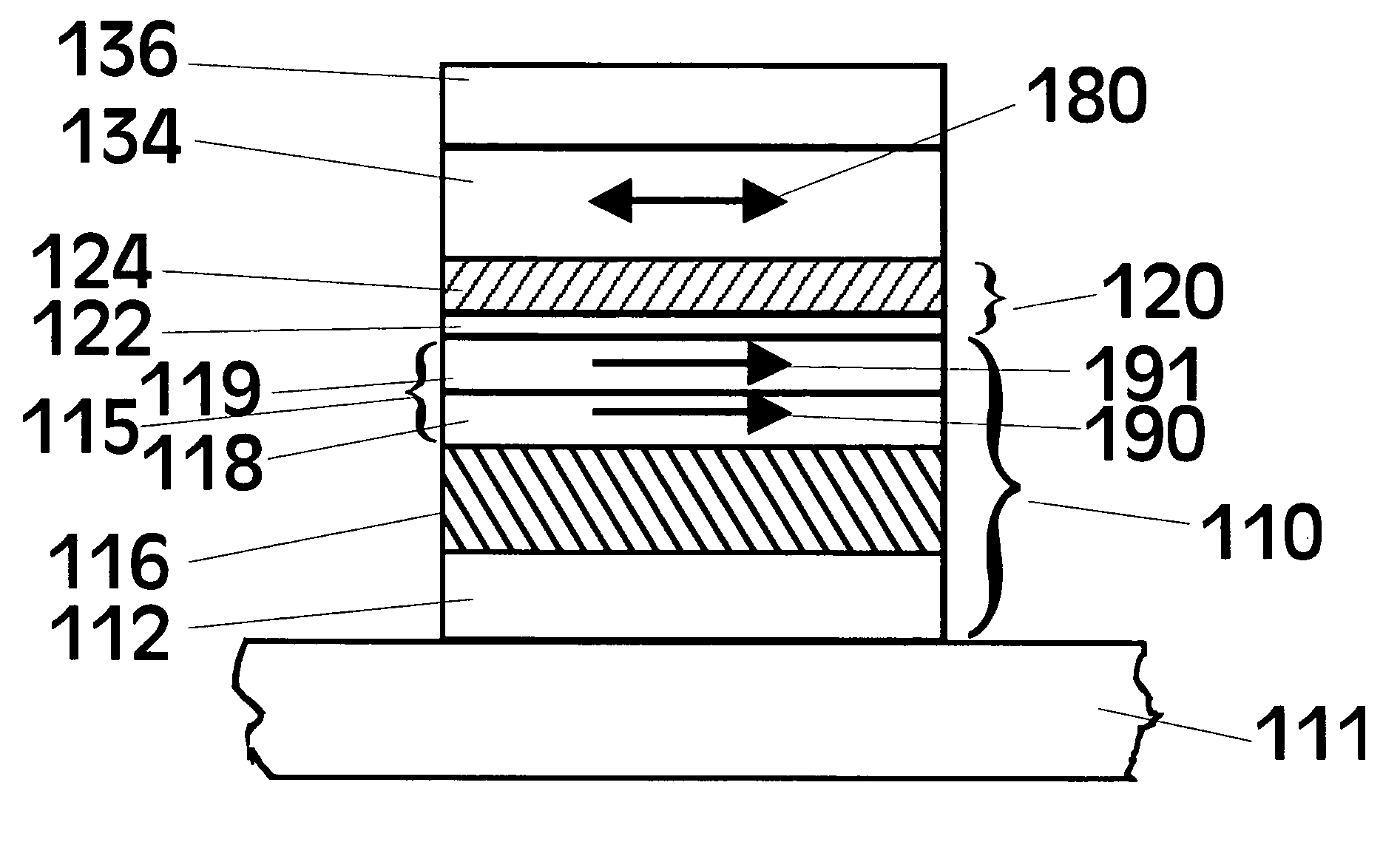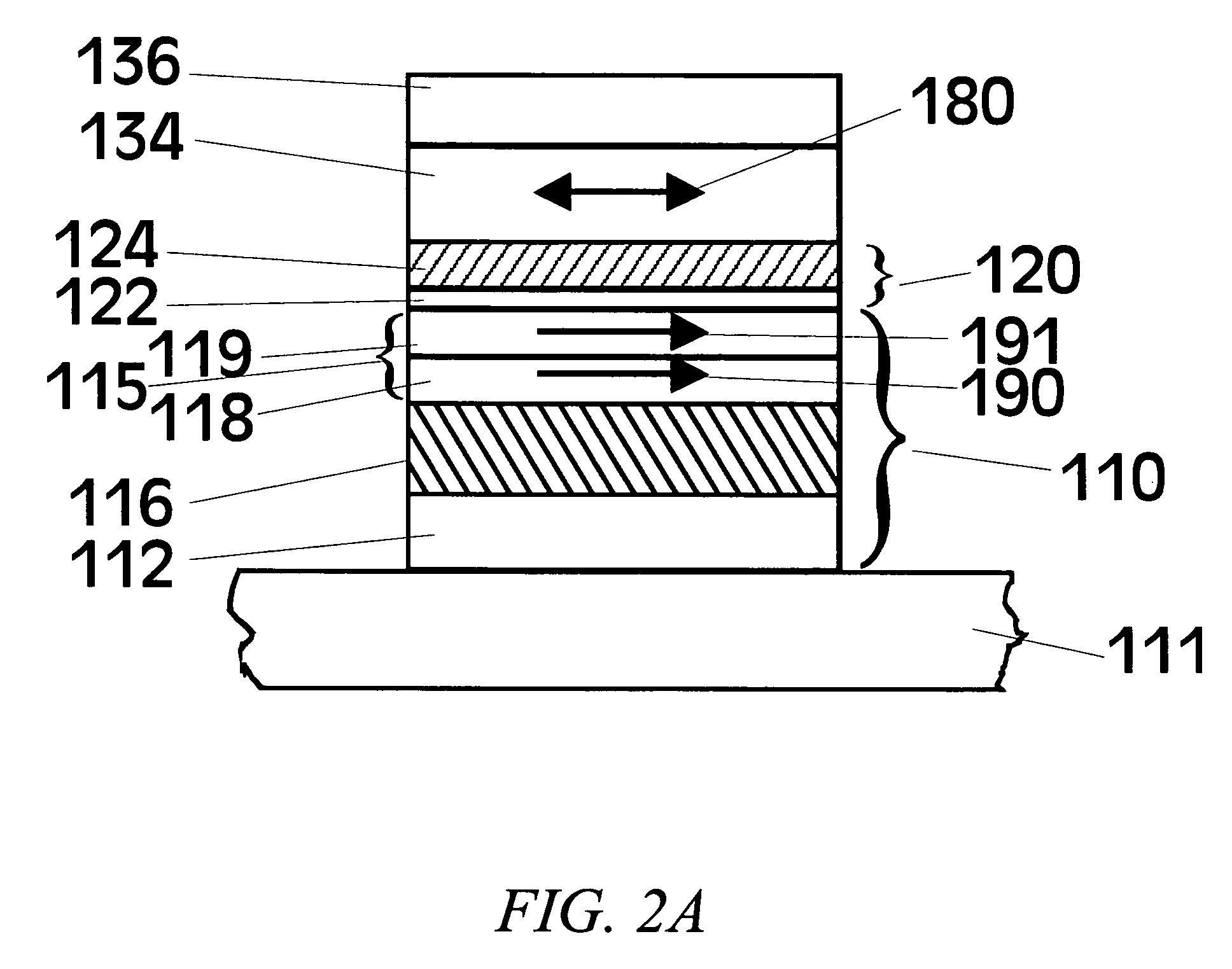Mg-Zn oxide tunnel barriers and method of formation
a technology of magnesium-zinc oxide and tunnel barriers, which is applied in the field of mtj magnetoresistive elements of magnetic tunnel junctions, can solve the problems of low resistance, reduced tmr, and high resistance as compared to metallic gmr sensors, and achieves the performance of magnesium-zinc oxide tunnel barriers, not significantly affecting the tunneling properties of magnesium-zinc oxide layers, and not significantly diminishing the spin polarization of electron tunneling
- Summary
- Abstract
- Description
- Claims
- Application Information
AI Technical Summary
Benefits of technology
Problems solved by technology
Method used
Image
Examples
Embodiment Construction
[0063]To date the tunneling barrier that has been most extensively studied for MTJs is alumina (Al2O3), where the ferromagnetic electrodes are typically formed from various Ni—Fe or Co—Fe or Ni—Co—Fe alloys. While a wide variety of methods have been used to deposit the alumina tunneling barrier, perhaps the most widely used method is one in which a thin layer of metallic Al is first deposited. Subsequently this layer is oxidized, either by “natural oxidation”, in which the Al layer is exposed to oxygen or air, or by plasma oxidation, in which the Al layer is placed in an oxygen plasma and the Al layer is often electrically biased by a few volts to enhance the plasma oxidation. The Al layer can also be oxidized by a beam of energetic oxygen ions. For thinner Al layers, it is usually preferred to oxidize the Al layer by natural oxidation.
MgO Tunnel Barriers
[0064]In view of this prior art method of forming Al2O3, the formation of MgO tunneling barriers was extensively studied by first ...
PUM
 Login to View More
Login to View More Abstract
Description
Claims
Application Information
 Login to View More
Login to View More - R&D
- Intellectual Property
- Life Sciences
- Materials
- Tech Scout
- Unparalleled Data Quality
- Higher Quality Content
- 60% Fewer Hallucinations
Browse by: Latest US Patents, China's latest patents, Technical Efficacy Thesaurus, Application Domain, Technology Topic, Popular Technical Reports.
© 2025 PatSnap. All rights reserved.Legal|Privacy policy|Modern Slavery Act Transparency Statement|Sitemap|About US| Contact US: help@patsnap.com



